There’s no doubt: Influencers of any size are in high demand, and 93% of marketers have used some form of influencer marketing. However, no matter which category of influencer you fall into, you’ll still need a well-constructed influencer media kit to secure your dream collaborations.
Now, I know what you’re thinking. “Am I influential enough to even have an influencer media kit?”
Here’s the cold, hard, confidence-boosting truth: Micro-influencers, who have between 5,000 and 20,000 social media followers, account for 47% of all influencers. Yes, that’s right: Nearly half of influencers do not have a very large following.
As you move down the scale of followers, engagement rates grow. Micro-influencers and nano-influencers (with less than 5,000 followers) pull in the highest engagement rates.
So, the answer is a resounding yes. Whether you’re new to the world of influencing or a seasoned sponsorship success, you should always have an up-to-date media kit.
This article will be your guide to building an influencer media kit. By the end of this guide, you’ll have a media kit that will show off your creator skills and give you the confidence to start pursuing brand deals with renewed ambition!
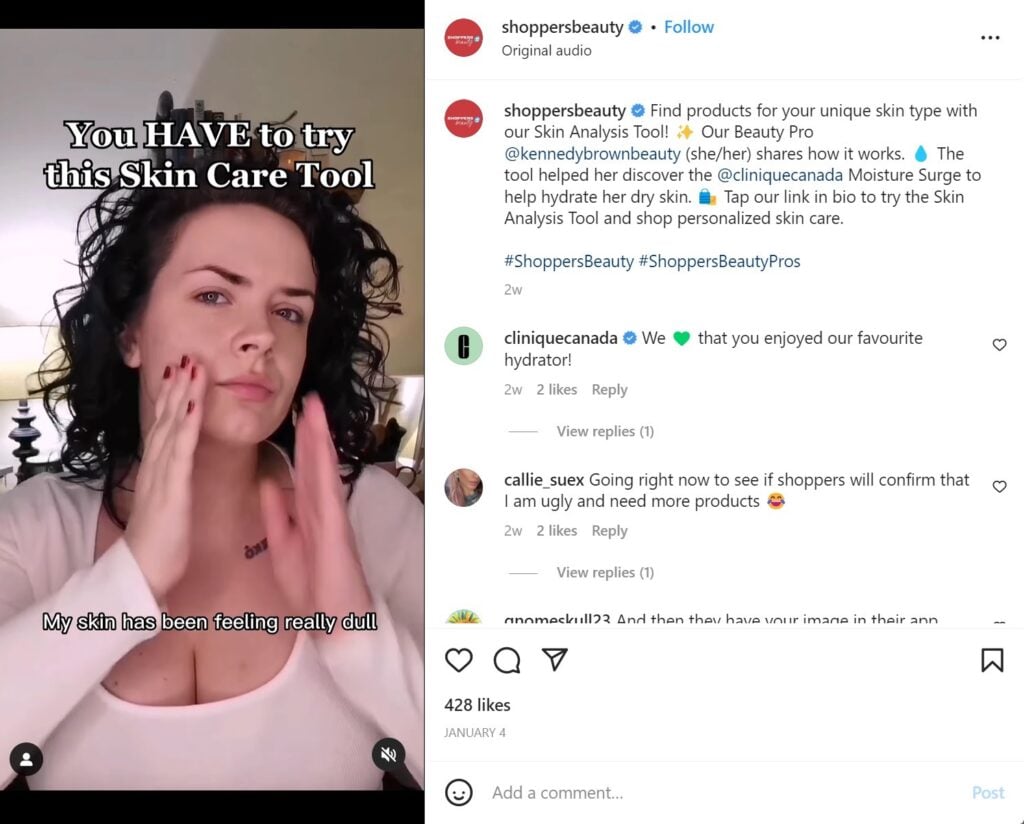
What Is An Influencer Media Kit?
Think of a media kit like your influencer resume. When a brand is interested in a partnership or collaboration, they will ask for your influencer media kit, like a regular job posting will require your resume.
It’s important to note that influencer media kits go by varying names, and a brand may ask you for a creator media kit or portfolio instead. Don’t freak out—these terms all refer to the same thing and should contain the same information.
Your influencer media kit (or portfolio) should feature your best and most relevant work, including:
- Videos, images, and other visual examples of the content you create.
- Analytics on your target audience, reach, and engagement.
- The unique experience and value you can provide to potential brand partners.
- Results and examples from past collaborations (if applicable).
Online creators use media kits—including publishers, bloggers, Instagram influencers, YouTubers, and even meme account holders.
Is A Media Kit The Same As A Press Kit?
People use these terms interchangeably, but they aren’t quite the same.
Media kits help you forge new partnerships by providing a broad look at data related to your audience, reach, and content style. Marketers use this information to determine whether your audience and skills match their campaign goals.
On the flip side, a press kit is a packet of information provided to someone in the press. Press kits are crafted for product launches, special events, or other company announcements that may interest a specific audience or the general public. The kit provides journalists and other media entities with the information necessary to write an article.
The Purpose Of An Influencer Media Kit
We can’t deny it: Influencers have earned the trust of the general public. In fact, 61% of consumers say they trust influencer product recommendations, while only 38% are swayed by advertising directly from brands.
For this reason, over $6.5 billion in marketing dollars are expected to go towards influencer marketing in 2023, a 23% increase from 2022.
Your media kit aims to showcase why you are worth those marketing dollars, whether due to your audience demographic, content style, or experience on a specific social media platform. If you think about it, your media kit is a soft launch of your influencing skills.
You must first influence brands to partner with you before you can move on to influencing their audience. Reach out to them. Send them your media kit after you’ve formed a relationship with them.
Everything You Need in Your Influencer Media Kit
Each influencer has different goals, but generally, brands looking to advertise with influencers are looking for the same information.
The more polished and creative your digital portfolio is, the more confident a brand will be that you’re the right influencer for them. There’s a lot of wiggle room for how you design your kit, and it mostly depends on what you offer. You’re the star of the show here, and your kit should showcase what draws your followers in.
Below are the fundamentals you should cover to make sure you get noticed. Adding this information to your media kit can set you apart from your competition and speed up the sales process.
About section (“Meet the Creator”)
The About section needs to give a quick rundown of who you are and what you're all about. Include your niche, expertise, and what drives your passion for content creation and influencing.
Remember that while this section is about you, it is not for you. Tailor this section to your potential clients and their target industry and niche. The best way to do this is by answering the question: “What defines your personal brand, and how will this benefit your brand partnerships?”
Information brands will be looking for include:
- Your country of origin
- Your age
- Your hobbies and passions
- Your experience with content creation
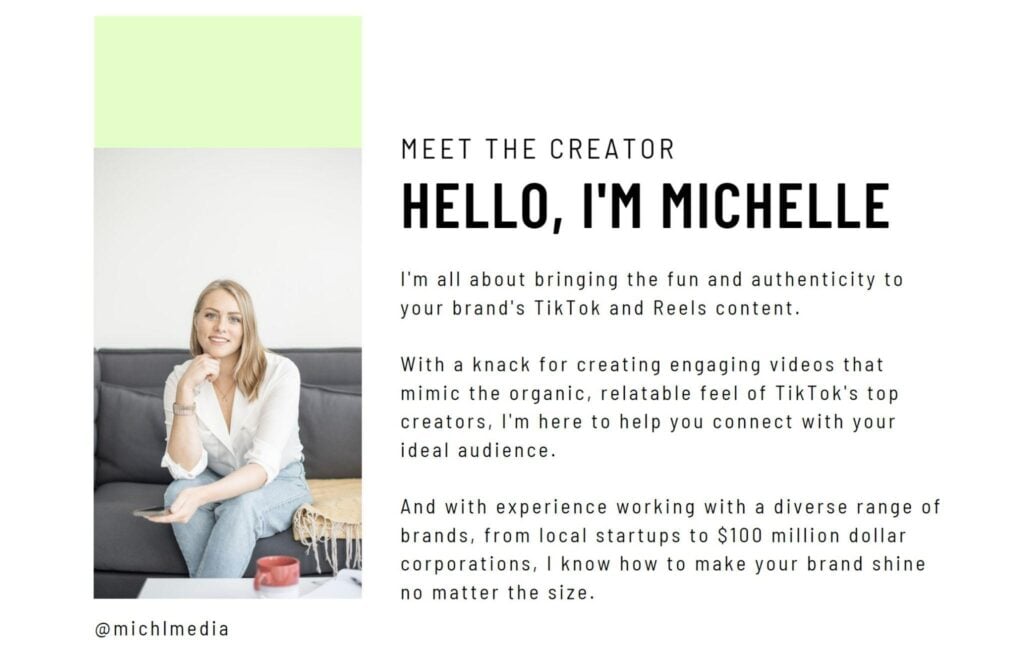
Examples of past work
Now, let's talk content. Show off your best photos, videos, or blog articles, and include the platforms and social media accounts where you create content (Instagram, YouTube, TikTok, etc.). Don't forget to mention the type of content you create, like product reviews, tutorials, or lifestyle content. Brands want to see what you're all about, so give them a taste!
Keep your content examples as relevant to your ideal client as possible, and look at what the brand is currently posting to its social media accounts. This will give you a good indicator of what content styles they are looking for.
To sell the experience of what it’s like to work with you, throw in a couple of testimonials from past sponsorships (if you have them).
Audience size and demographics
Your audience demographics, like age group and location, are the best way for a potential client to understand who will view, engage and convert from your sponsored posts. This section can also detail your audience size, but remember that followers aren’t everything. Brands recognize now that getting their product in front of the right eyeballs is more important than how many eyes see it.
Be specific about both size and demographics, and make sure your numbers are relatively up to date. Detail the breakdown of your audience, including:
- Gender
- Age range
- Top country, city, or region
- Language
- General interests
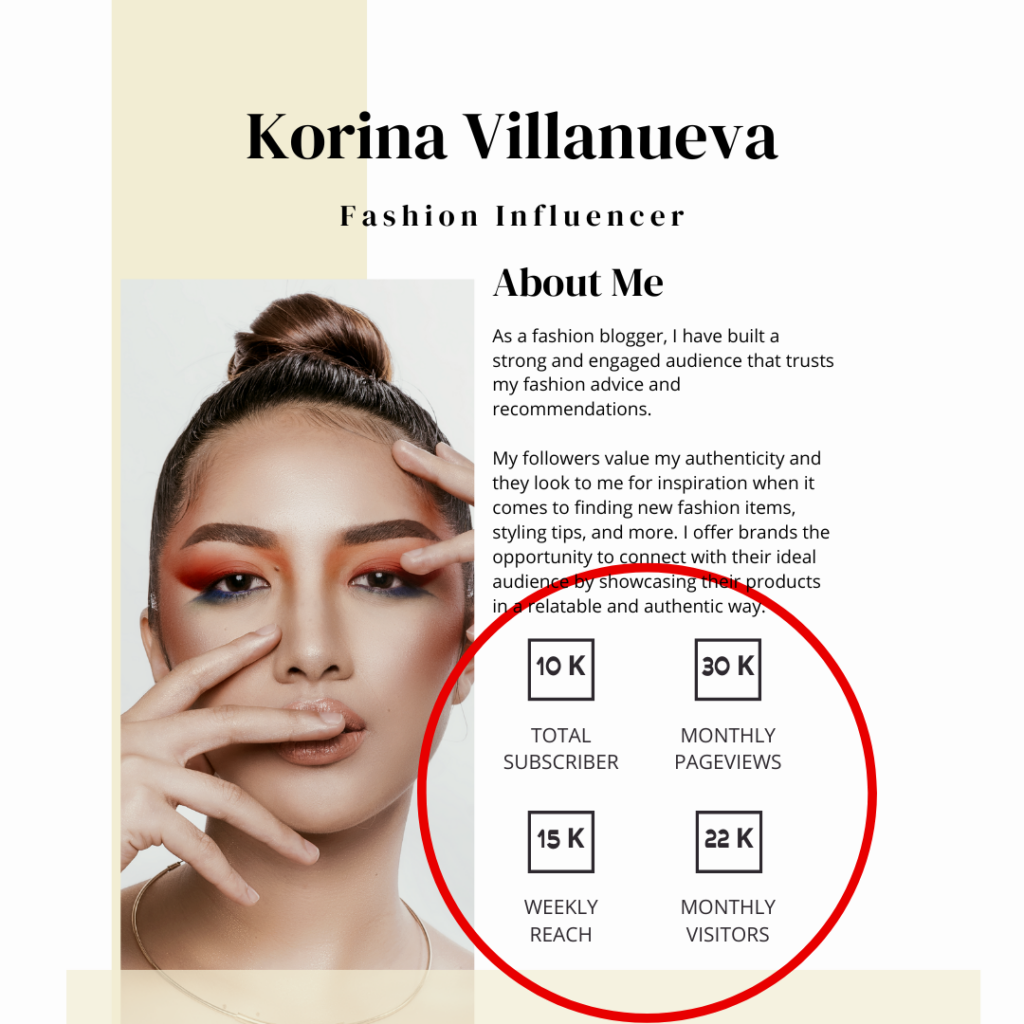
Other analytics data
An essential part of social media marketing involves reviewing analytics and metrics. Social media analytics is like the report card of your social media accounts.
They show how well your content is performing and how engaged your audience is. This data can include:
- Your engagement (likes, comments, shares)
- How many views or reads your content receives
- Where your traffic comes from
- How much organic traffic you receive
- How much paid traffic you receive
- Your bounce rate
- Unique visitors vs. returning visitors
- How long users spend reading or looking at your content
When you include this information in your influencer media kit, it gives brands a clear understanding of how far your content reaches and how engaged your audience is. This is important for brands to evaluate the potential success of a collaboration or campaign with you.
Contact information
Finally, don’t forget to include your contact information! Include your full name, email address, and phone number. It's also a good idea to include your location, as it can be helpful for brands to know where you are based.
In addition to your personal contact information, you should also include a link to your website or blog if you have one, as well as links to your social media profiles. This way, brands have multiple ways to contact you and can easily find more information about you and your content.
Should I Include Rates in my Influencer Media Kit?
This may be controversial, but my advice is to leave your rates out of your influencer media kit.
I cannot stress the importance of knowing your worth as a social media influencer and content creator. By including a standardized rate card in your influencer media kit, I guarantee you will leave hundreds (if not thousands) of dollars on the table because you are killing your ability to negotiate.
For example, let’s say you reach out to a brand, and they get back to you asking for your media kit. You know nothing about the goals of their campaign yet, but your media kit has pricing for one TikTok post at $300.
What if this brand has an influencer marketing budget of $1,000 per video? What if they have a lengthy review and revision process? And don’t even get me started on licensing fees, content rights, and royalties.
Without this information from the brand, there is no way of knowing if you are charging a fair rate. Do not set expectations of what your work is worth before understanding the project's scope.
Instead, offer to send over a separate rate card explicitly tailored to the campaign's needs. To do this, ask the following questions:
- How many pieces of content (deliverables) are required?
- When are deliverables due? (Is it realistic for you?)
- Will the content be used for paid or organic posting?
- If the post is sponsored, for how long?
- Will this content be posted on your accounts, the brand accounts, or both?
- What is the budget for the campaign?
How To Create Your Influencer Media Kit
One easy way to get started on your influencer media kit is to download our free media kit template. I also recommend creating a free account on Canva, an online design tool with hundreds of free templates and marketing materials, including pre-made influencer media kit templates.
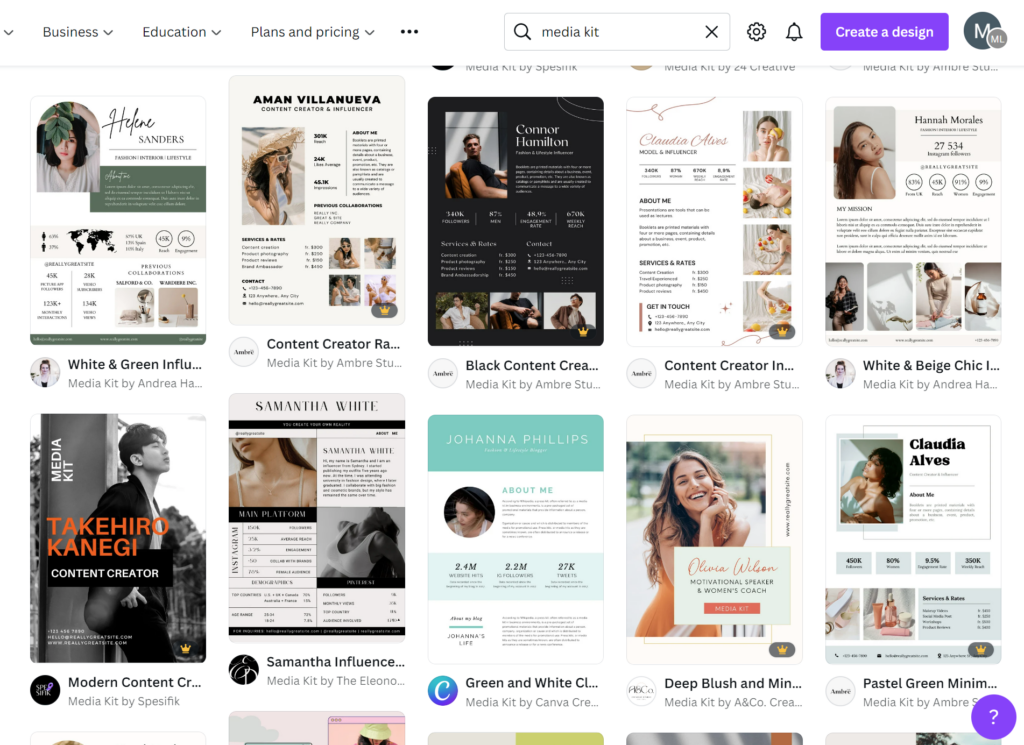
Creating a Media Kit with Canva
After creating a free account on Canva, you’ll be redirected to their homepage. On the Canva homepage, you’ll see a search bar, which you’ll use to locate your media kit template.
Search any of the following:
- Influencer media kit
- Media kit
- Content creator portfolio
- Creative portfolio
- Freelance portfolio
- Influencer portfolio
Choose any template you like, and select “Customize Template” to open the Canva editor. To the left of the screen, you’ll find your editor menu, where you can add new graphic elements, upload your personal content, change font styles, color palettes, and more.
The best part about Canva is that it allows you to turn your design into a website in just a few clicks.
To do this, you can select a premade website portfolio template or resize your existing design to the proper website dimensions. You can do this by clicking on “Resize” in the upper left corner.
Once your design has the appropriate website dimensions, you’ll see an option to “Publish Website” in the upper right corner. Doing this will open a menu with options to connect an existing website or purchase a new custom domain through Canva.
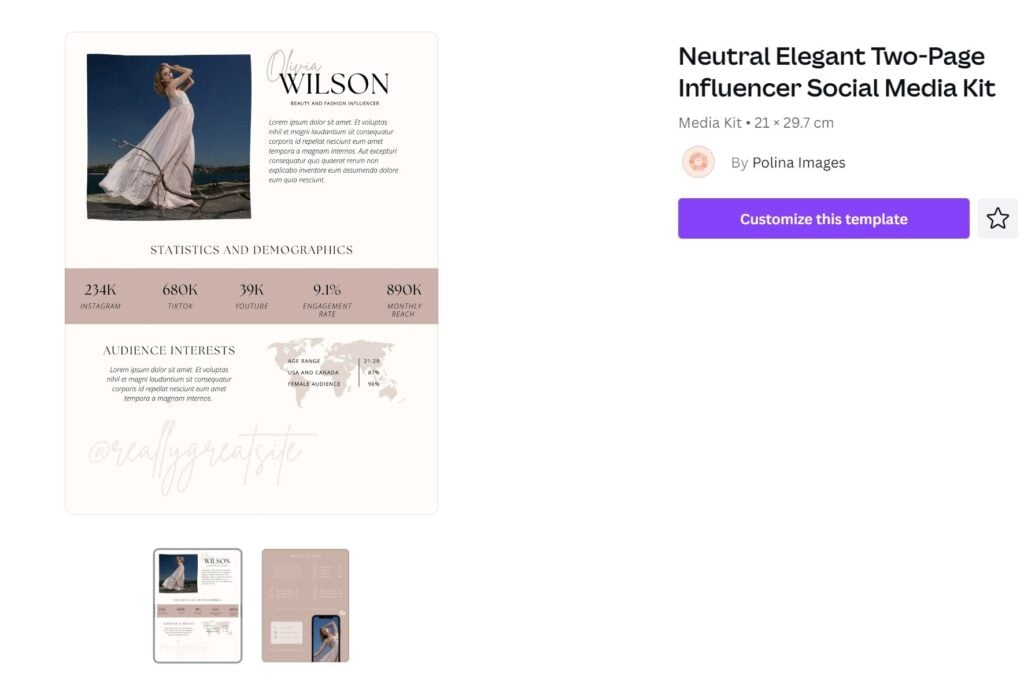
Other tools for building media kits
If you’re more familiar with Adobe Creative Cloud, you can also use Photoshop to create your influencer media kit. While you can find media kit templates for Photoshop, they do not come for free like in Canva. Photoshop templates will also require a higher level of skill to edit. If you’re a beginner, navigating the extensive tools available in Photoshop can be quite timely.
Building a media kit within Powerpoint or Google Slides is also possible. If that’s your jam, we’ve got a free media kit template you can use to save time! Ultimately, it doesn’t matter which tool you use as long as your final kit is easily shareable as a website or PDF file.
Share Your Media Kit with the World!
Now it’s time to get some eyeballs on your beautiful media kit.
Remember, your media kit is just a jazzed-up resume, and it’s your chance to showcase your skills, accomplishments, and the value you can bring to a brand.
Here's my final hot tip: Don't just share your media kit on your website, but also link it on your social media accounts like LinkedIn, Instagram, or YouTube. And don't forget to add it to your email signature. This will make it easy for anyone you interact with to find your media kit and check out your work.
And if you want to earn more from your content, subscribe to the Indie Media Club newsletter. It's packed with tips and strategies to help you grow your audience, monetize your content, and connect with brands. Trust me; it's worth signing up.
Also check out:
- How To Make A Media Kit (With Free Template + Downloadable Media Kit Examples)
- What Is A Media Kit? (And What Goes In It)
- The Best Media Kit Examples Of 2023 (With Free Download)
- 5 Podcast Media Kit Samples & How To Create Your Own
- 5 UGC Examples Every Creator Should Have in Their Media Kit or Portfolio
- Pitch Guide: Why Influencers, Creators & Publishers Need A Brand Deck (and How to Build)
- 10 Best Social Media Advertising Software In 2024
- 10 Best Advertising Networks For Indie Media Creators In 2024



